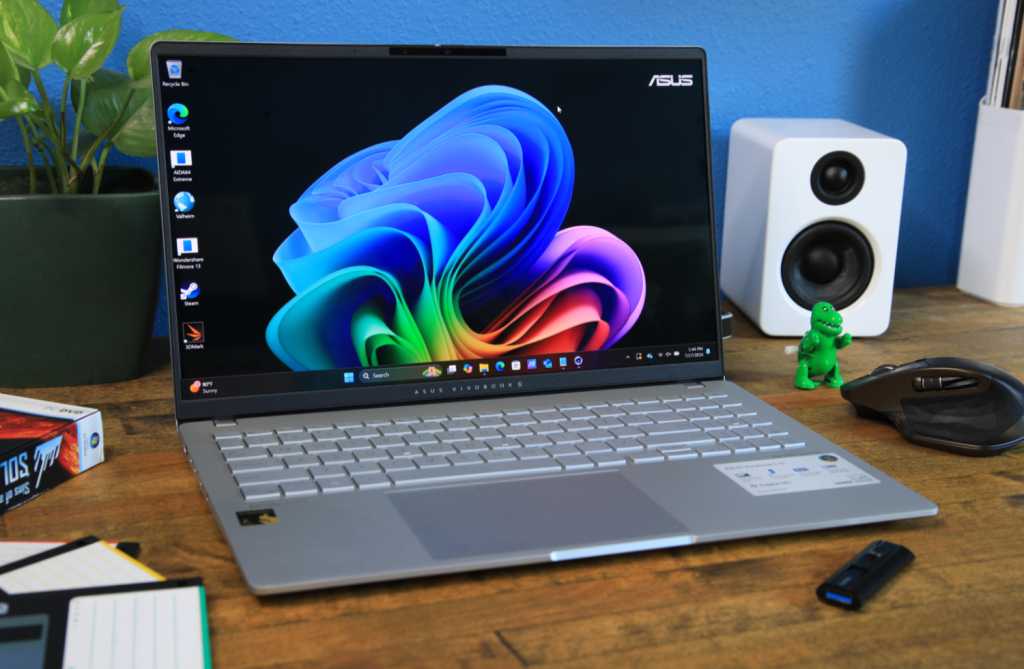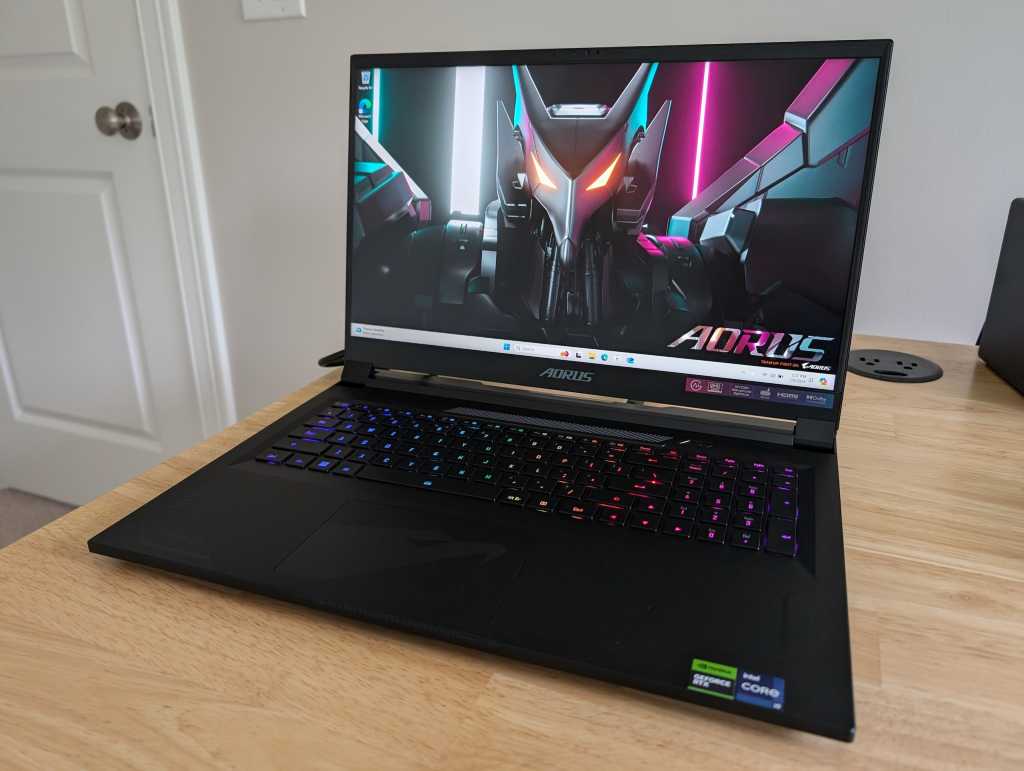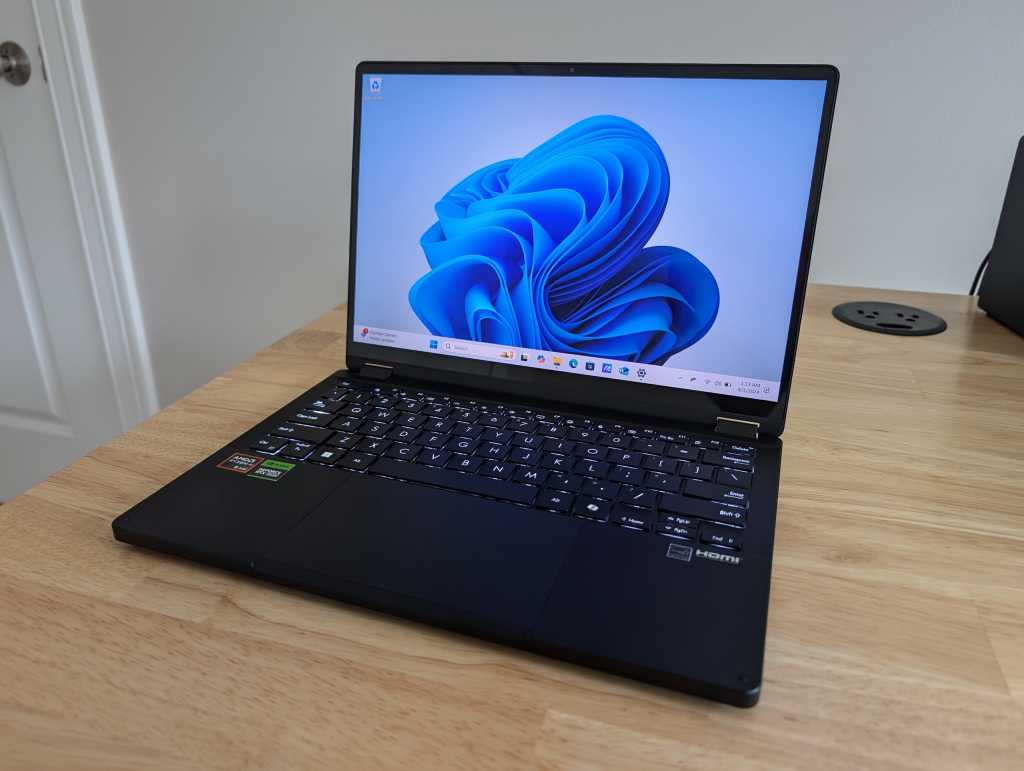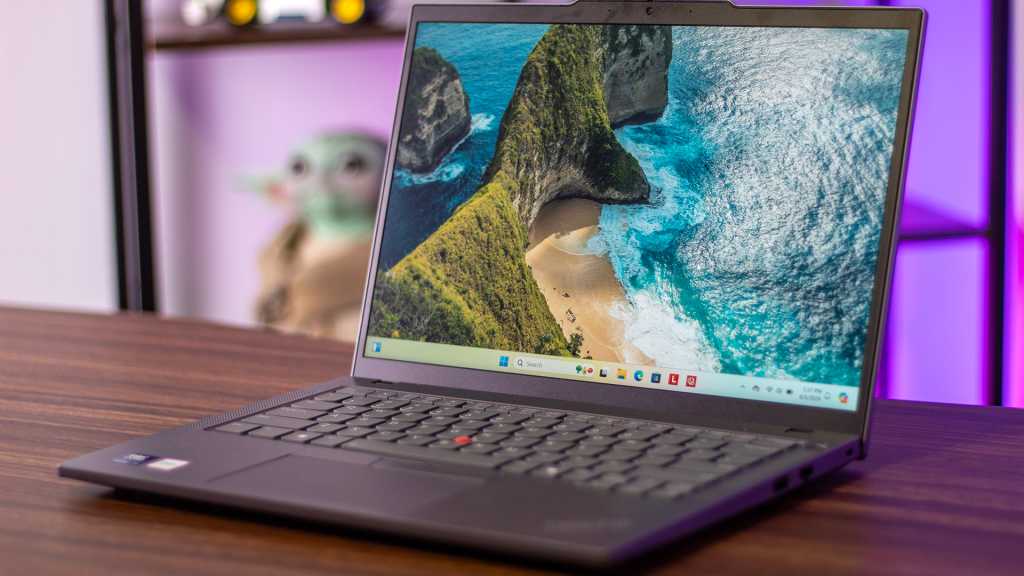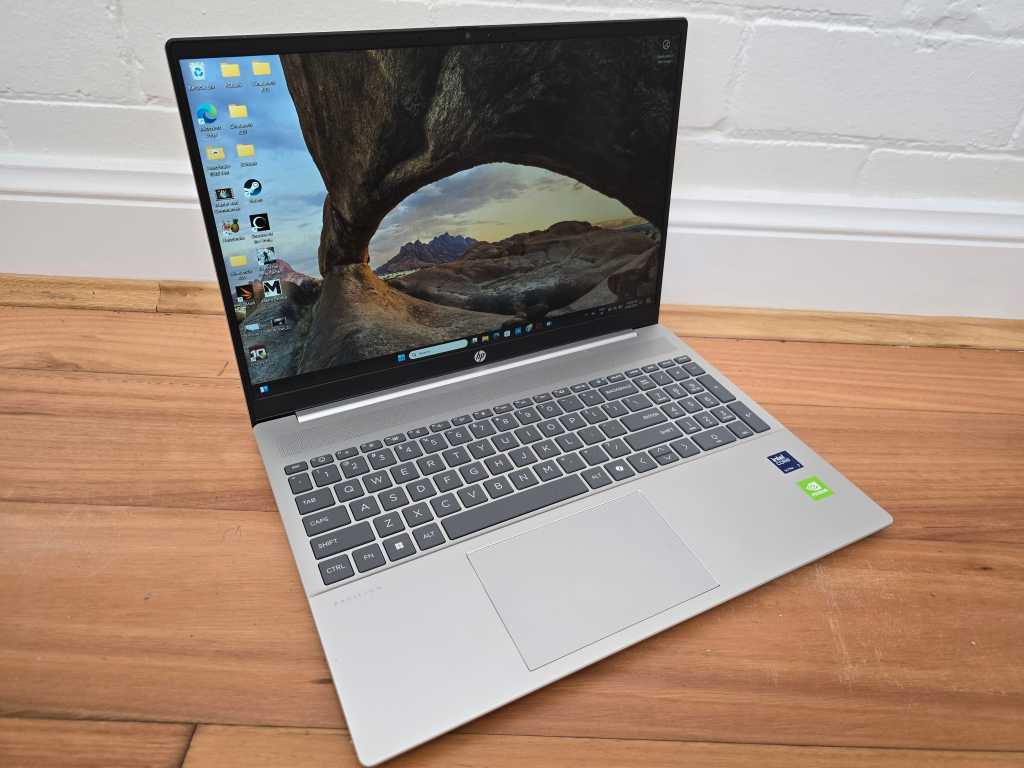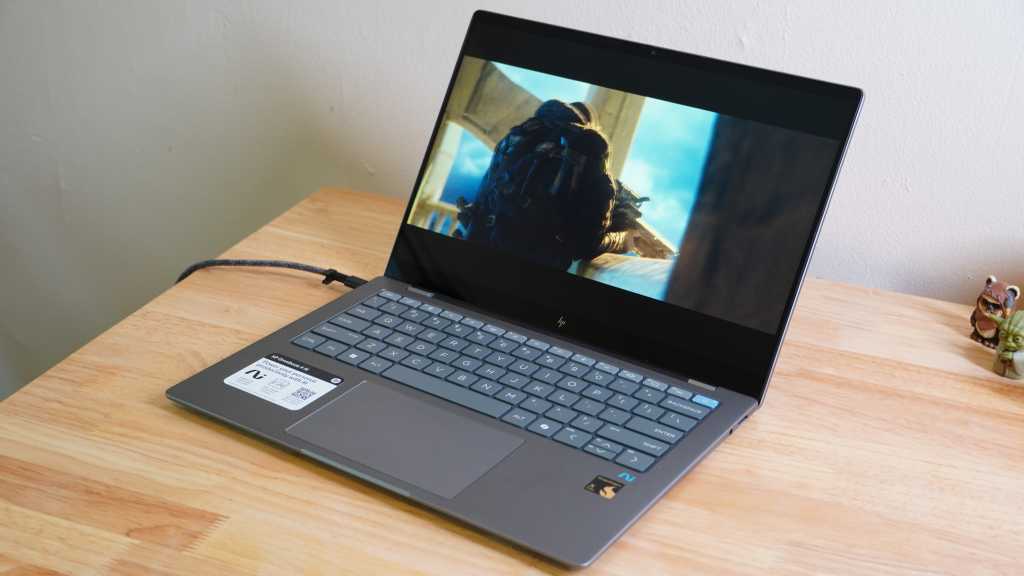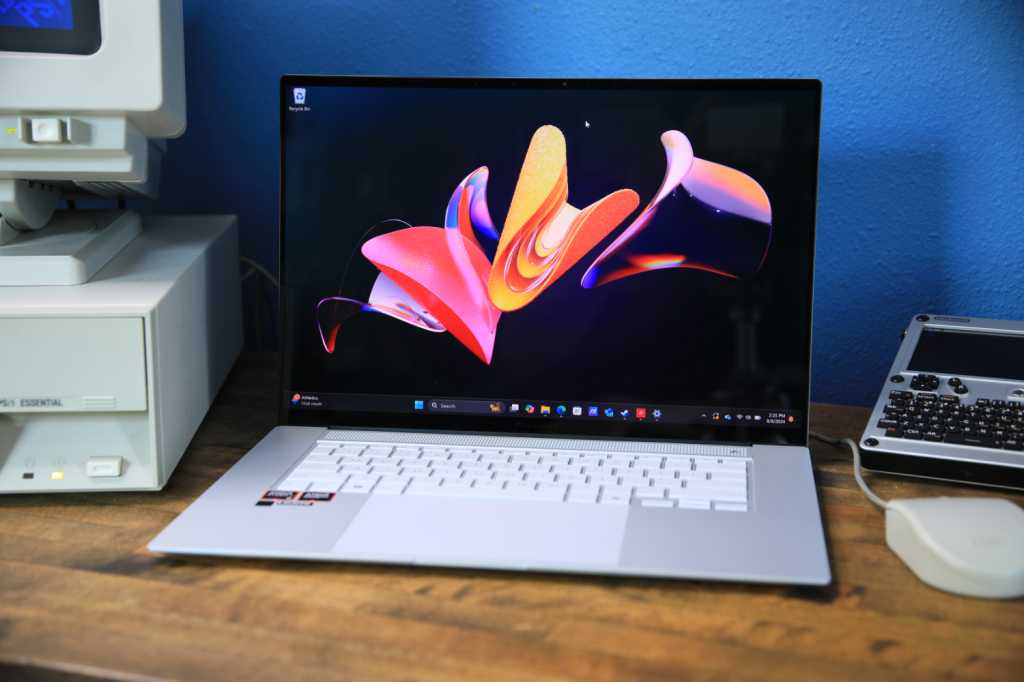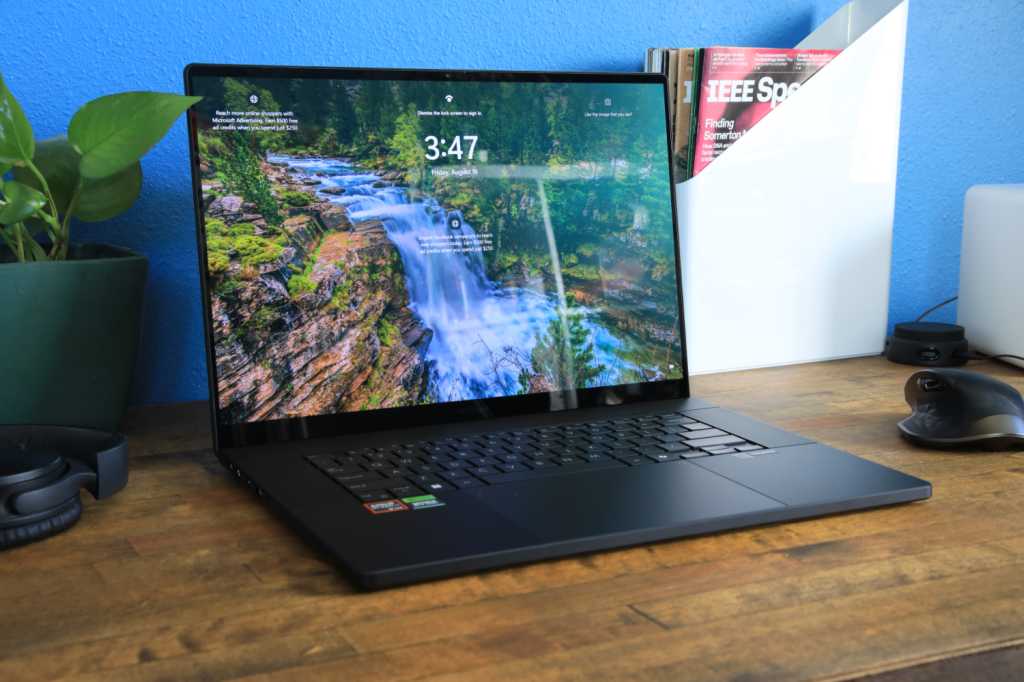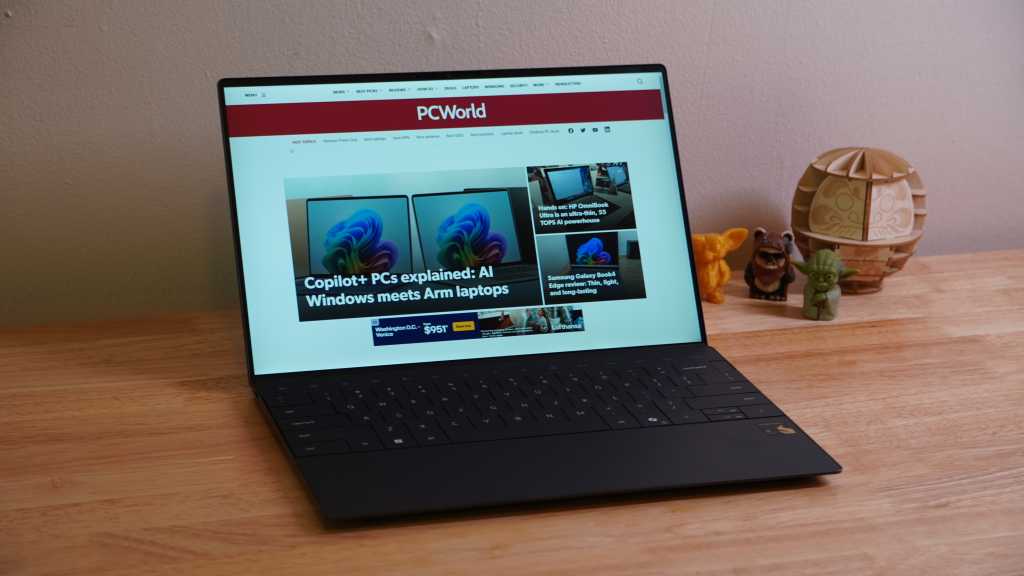The Asus Vivobook S 15 joins the growing ranks of Copilot Plus PCs, all powered by Qualcomm Snapdragon X processors. This marks a significant shift in Windows laptop hardware, yet the Vivobook S 15 maintains a conventional design. While offering a pleasant user experience, its conservative approach makes it a challenging recommendation in a competitive market.
Asus Vivobook S 15: Specifications and Features
The Qualcomm Snapdragon X Elite processor takes center stage in this laptop. The review unit featured the Elite version, an upgrade over the Snapdragon X Plus, boasting two additional cores. Paired with 16GB of RAM and a 1TB SSD, the Vivobook S 15 aligns with typical mid-range Windows laptop configurations.
- CPU: Qualcomm Snapdragon X Elite XE 78 100
- Memory: 16GB LPDDR5
- Graphics/GPU: Qualcomm Adreno
- Display: 15.6-inch 2880 x 1620 OLED, 120Hz refresh rate, HDR
- Storage: 1TB PCIe Gen 4 SSD
- Webcam: 1080p with dual-mic array and privacy shutter
- Connectivity: 2x USB-C 4, 2x USB-A 3.2 Gen 1, 1x HDMI 2.1, 1x 3.5mm combo audio, microSD card reader
- Networking: Wi-Fi 7, Bluetooth 5.4
- Biometrics: Windows Hello facial recognition
- Battery: 70 watt-hours
- Dimensions: 13.88 x 8.93 x 0.63 inches
- Weight: 3.13 pounds
- MSRP: $1,299.99
Pricing begins at $1,099 for the base model with the Snapdragon X Plus and a 512GB SSD. The reviewed model, with the Snapdragon Elite and 1TB SSD, is priced at $1,299. This positions it competitively within the Qualcomm-powered Windows PC market.
Design and Build Quality
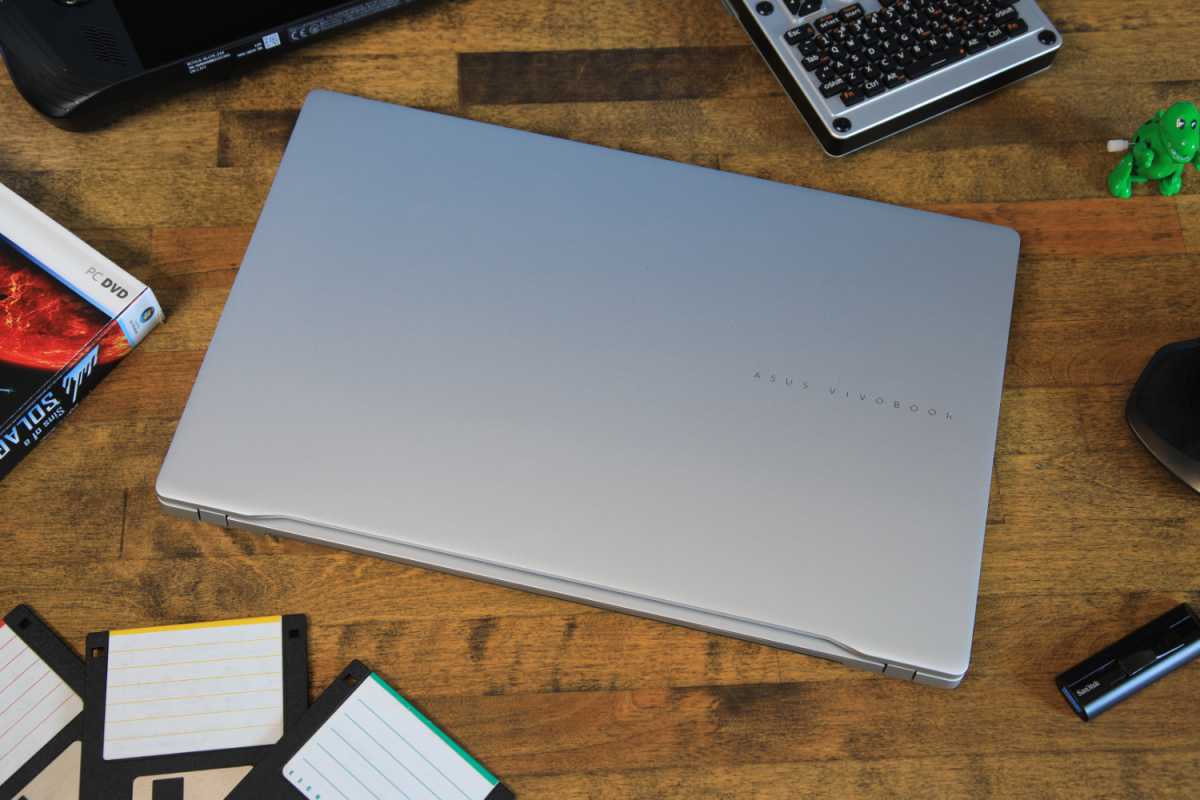 alt text: The Asus Vivobook S 15 open on a desk, showcasing its silver design and keyboard.
alt text: The Asus Vivobook S 15 open on a desk, showcasing its silver design and keyboard.
The Vivobook S 15’s design is undeniably generic. The silver aluminum chassis lacks distinctive features, both inside and out. The silver keyboard, while functional, further contributes to the laptop’s understated aesthetic.
Despite its unremarkable appearance, the build quality is commendable. At 3.13 pounds and 0.63 inches thick, it’s thin and light yet surprisingly rigid. It feels noticeably sturdier than similarly sized but lighter laptops like the LG Gram or Acer Swift.
Keyboard and Trackpad
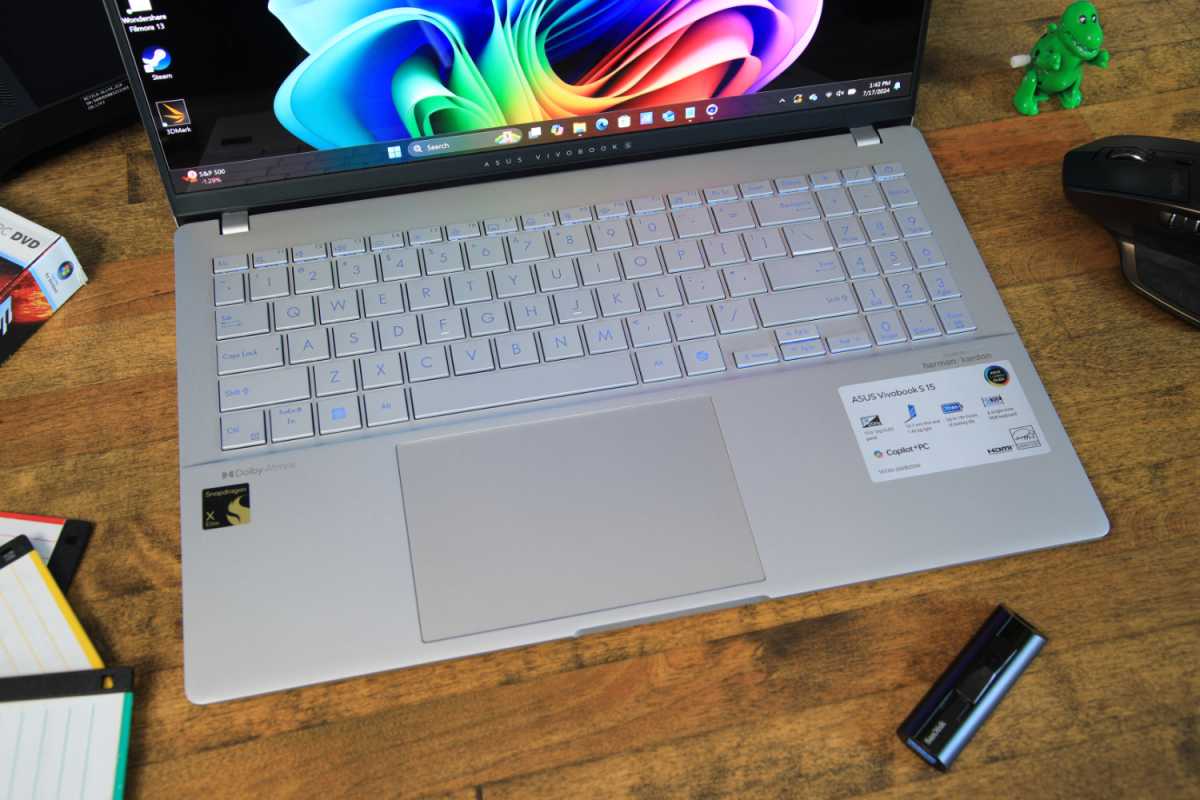 alt text: A close-up view of the Asus Vivobook S 15's keyboard, highlighting the key layout and number pad.
alt text: A close-up view of the Asus Vivobook S 15's keyboard, highlighting the key layout and number pad.
The Vivobook S 15 features a spacious keyboard with a number pad. While the number pad keys are slightly narrower than standard keys, they remain comfortable to use. The white backlight is a welcome addition.
Key travel is good, with a distinct tactile click. While not exceptional, the keyboard provides a comfortable typing experience for extended use.
The touchpad is adequately sized for a 15-inch laptop, although some competitors offer larger options. Its offset position to the left can make the palm rest feel slightly cramped, but unintended inputs were not a significant issue.
Display and Audio
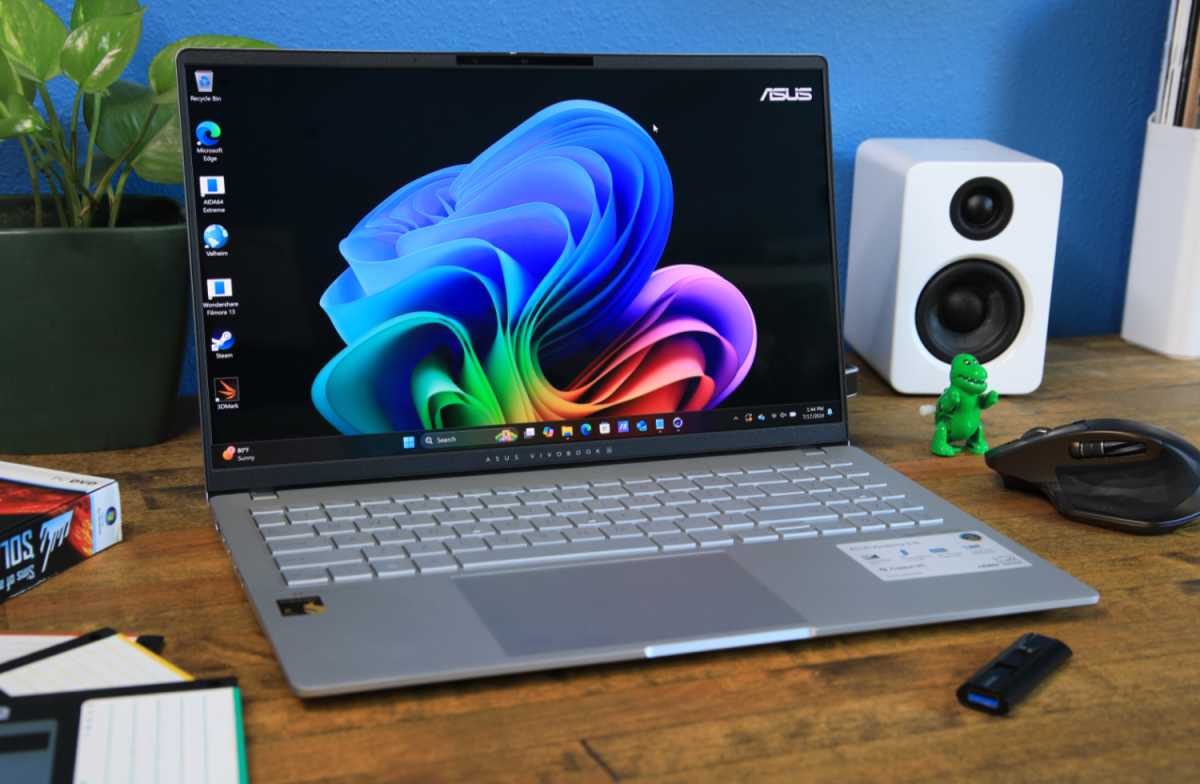 alt text: The Asus Vivobook S 15 displaying a vibrant image, showcasing the quality of its OLED screen.
alt text: The Asus Vivobook S 15 displaying a vibrant image, showcasing the quality of its OLED screen.
The 15.6-inch OLED display boasts a 2880 x 1620 resolution and a 120Hz refresh rate. However, its 16:9 aspect ratio feels dated compared to the more modern 16:10 ratio found on many competitors.
Despite this, the OLED panel delivers excellent contrast, vibrant colors, and good brightness. The VESA DisplayHDR True Black 600 certification enhances HDR content, surpassing some rivals.
The laptop’s speakers offer adequate volume and clear midrange. While bass-heavy music can cause distortion, the overall audio quality is acceptable for a thin and light laptop.
Webcam, Microphone, and Biometrics
The 1080p webcam provides acceptable image quality for video calls, with clear images and good color reproduction. The dual-microphone array effectively reduces background noise and delivers clear audio.
As a Copilot Plus PC, the Vivobook S 15 benefits from AI-powered studio effects, noise cancellation, and real-time captioning and translation. These features are valuable additions, especially considering the laptop’s competitive price point.
Windows Hello facial recognition provides convenient and reliable biometric login.
Connectivity
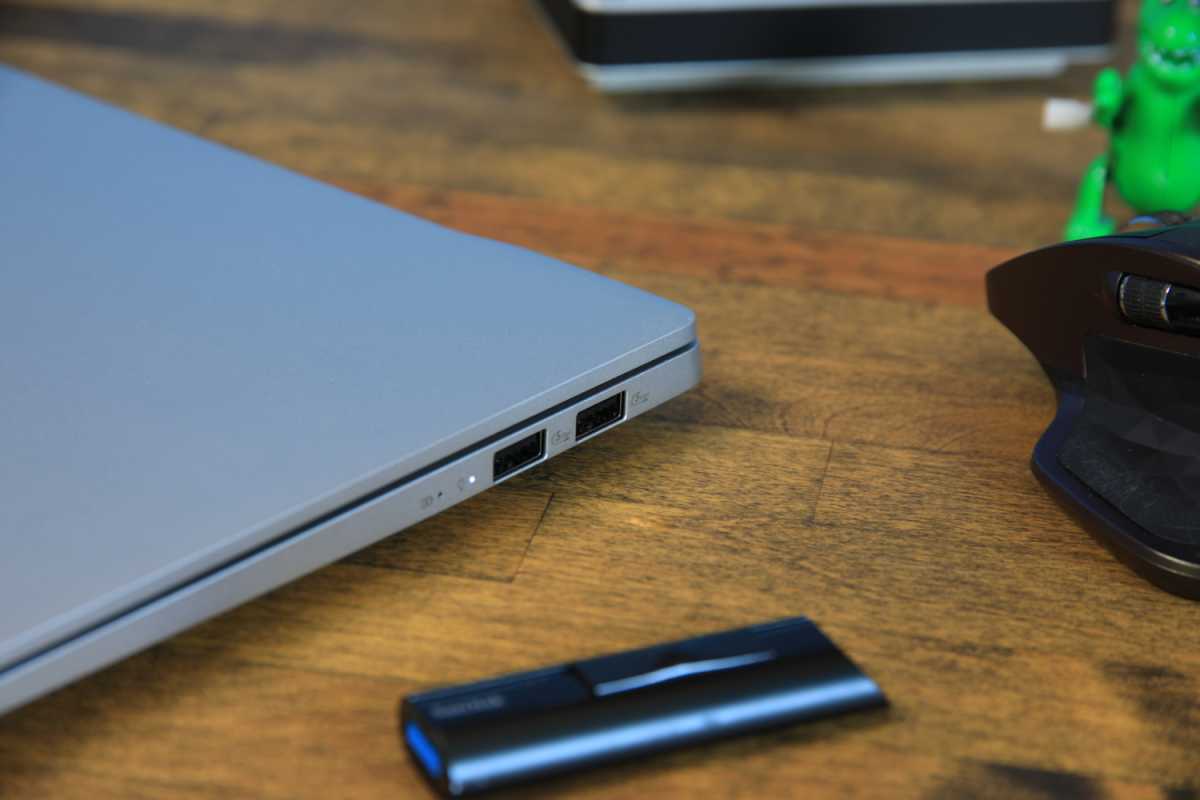 alt text: A close-up of the Asus Vivobook S 15's ports, showcasing its connectivity options.
alt text: A close-up of the Asus Vivobook S 15's ports, showcasing its connectivity options.
The Vivobook S 15 offers a versatile selection of ports, including two USB-C 4 ports with DisplayPort Alternate Mode and Power Delivery, two USB-A 3.2 Gen 1 ports, HDMI 2.1, a 3.5mm combo audio jack, and a microSD card reader. The only notable omission is an Ethernet port.
The inclusion of Wi-Fi 7 and Bluetooth 5.4 ensures future-proof wireless connectivity.
Performance
The reviewed model’s Snapdragon X Elite processor delivers impressive multi-core performance, often rivaling Intel Core Ultra and AMD Ryzen processors.
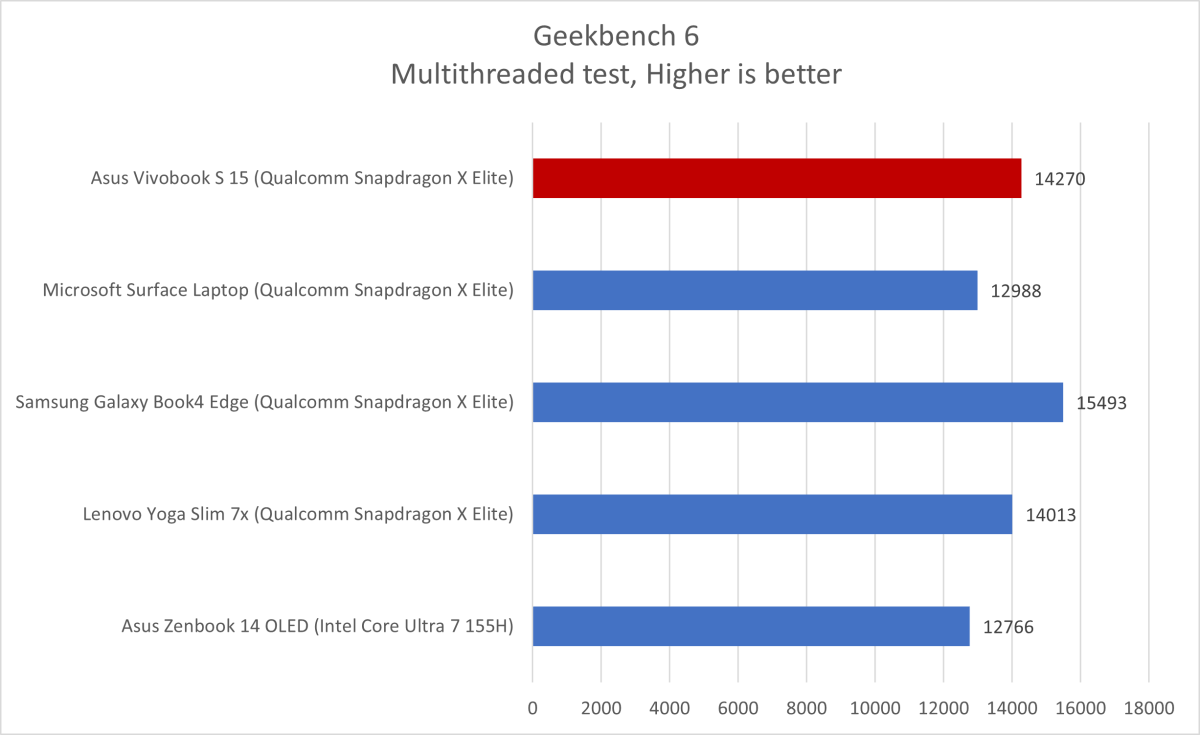 alt text: A screenshot of Geekbench 6 benchmark results for the Asus Vivobook S 15, showcasing its processor performance.
alt text: A screenshot of Geekbench 6 benchmark results for the Asus Vivobook S 15, showcasing its processor performance.
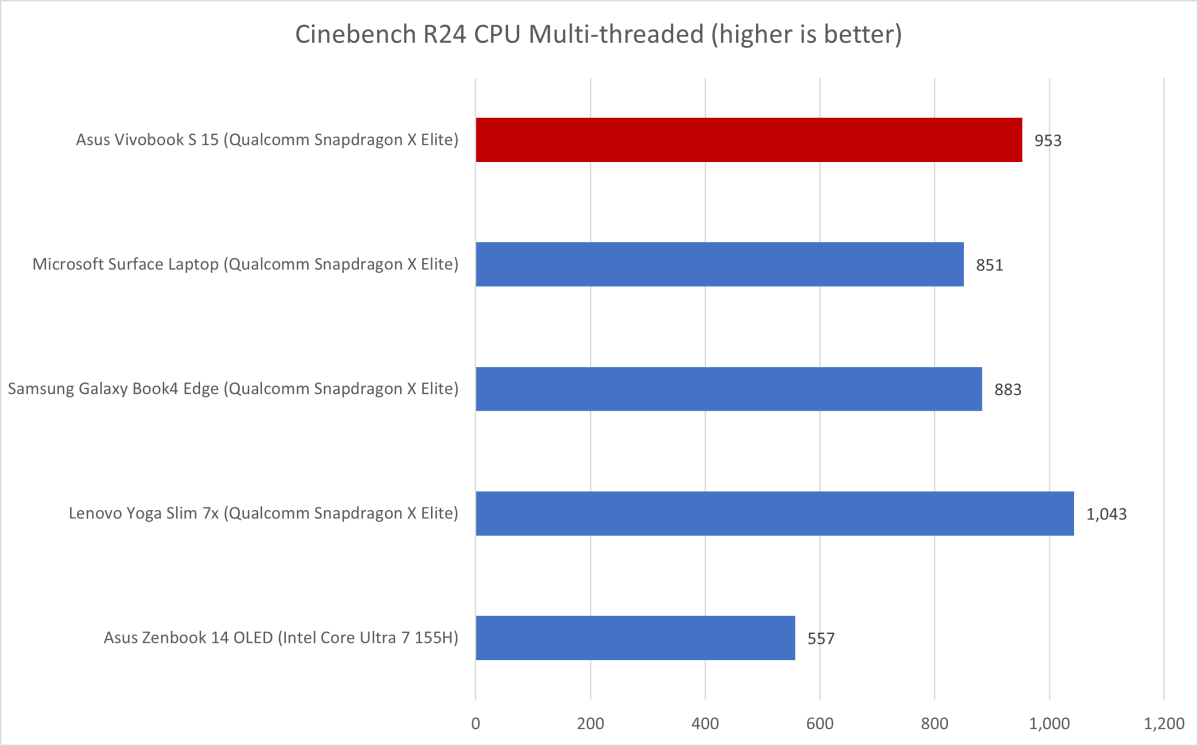 alt text: A screenshot of Cinebench R24 benchmark results for the Asus Vivobook S 15, highlighting its multi-threaded performance.
alt text: A screenshot of Cinebench R24 benchmark results for the Asus Vivobook S 15, highlighting its multi-threaded performance.
While the Qualcomm Adreno graphics perform well in Arm-native applications, performance lags in applications requiring emulation. This limits gaming capabilities, particularly given the lack of readily available Arm-native games on major platforms.
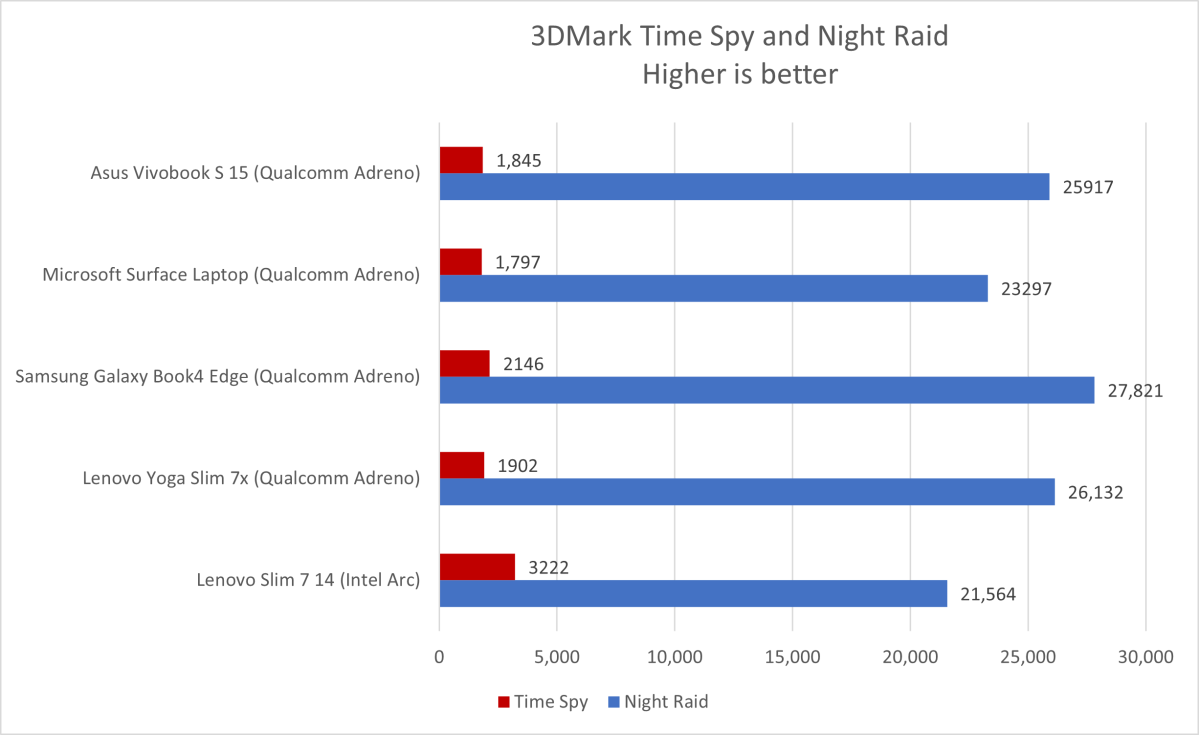 alt text: A screenshot of 3DMark Time Spy and Night Raid benchmark results for the Asus Vivobook S 15, comparing its graphics performance in Arm-native and emulated environments.
alt text: A screenshot of 3DMark Time Spy and Night Raid benchmark results for the Asus Vivobook S 15, comparing its graphics performance in Arm-native and emulated environments.
Battery Life
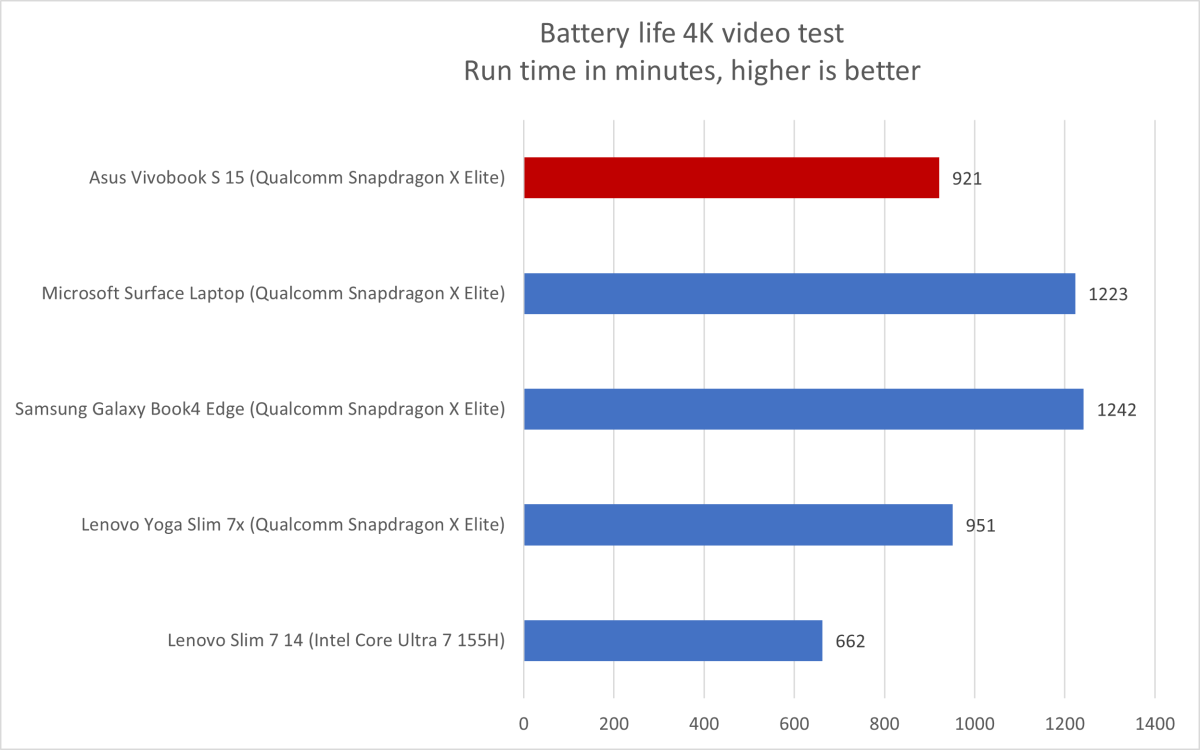 alt text: A graph showcasing the battery life of the Asus Vivobook S 15 compared to other laptops.
alt text: A graph showcasing the battery life of the Asus Vivobook S 15 compared to other laptops.
The 70 watt-hour battery provides good battery life, lasting approximately 15.5 hours in our video playback test. While respectable, it falls short of some competitors, including Apple’s MacBooks and certain AMD Ryzen-powered laptops.
Conclusion
The Asus Vivobook S 15 is a capable Copilot Plus PC offering good performance, decent battery life, and comprehensive connectivity. However, its generic design and limitations in gaming performance prevent it from truly standing out. While a solid choice for those prioritizing a thin and light 15-inch laptop, other Copilot Plus PCs offer more compelling features and designs.



